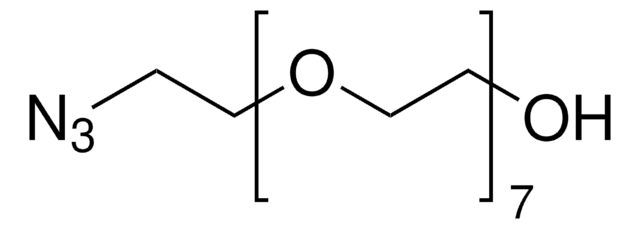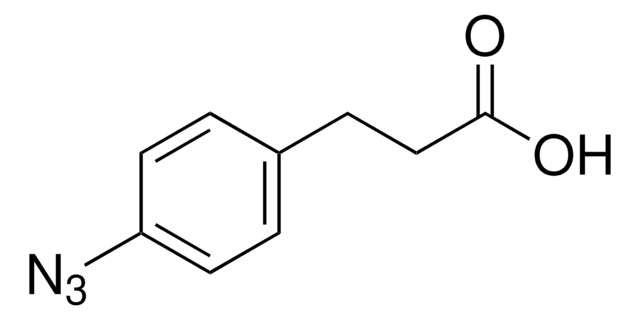QBD10502
Azido-dPEG®4-acid
Sinónimos:
15-Azido-4,7,10,13-tetraoxapentadecanoic acid, 3-[2-[2-[2-(2-Azidoethoxy)ethoxy]ethoxy]ethoxy]propanoic acid, Polyethylene glycol
About This Item
Productos recomendados
assay
>90%
form
solid or viscous liquid
reaction suitability
reaction type: click chemistry
reagent type: cross-linking reagent
reaction type: click chemistry
functional group
azide
carboxylic acid
polymer architecture
shape: linear
functionality: heterobifunctional
shipped in
ambient
storage temp.
−20°C
SMILES string
OC(CCOCCOCCOCCOCCN=[N+]=[N-])=O
InChI
1S/C11H21N3O6/c12-14-13-2-4-18-6-8-20-10-9-19-7-5-17-3-1-11(15)16/h1-10H2,(H,15,16)
InChI key
BODPHGOBXPGJKO-UHFFFAOYSA-N
Categorías relacionadas
Features and Benefits
Legal Information
Storage Class
11 - Combustible Solids
wgk_germany
WGK 3
flash_point_f
Not applicable
flash_point_c
Not applicable
Certificados de análisis (COA)
Busque Certificados de análisis (COA) introduciendo el número de lote del producto. Los números de lote se encuentran en la etiqueta del producto después de las palabras «Lot» o «Batch»
¿Ya tiene este producto?
Encuentre la documentación para los productos que ha comprado recientemente en la Biblioteca de documentos.
Los clientes también vieron
Nuestro equipo de científicos tiene experiencia en todas las áreas de investigación: Ciencias de la vida, Ciencia de los materiales, Síntesis química, Cromatografía, Analítica y muchas otras.
Póngase en contacto con el Servicio técnico











